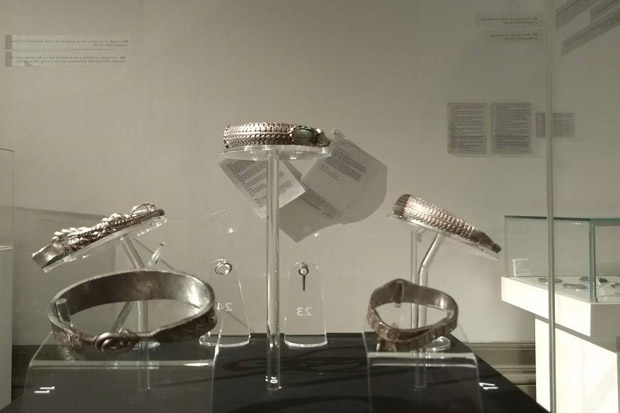Have you ever wondered how Viking the North-West really is? The Viking: Rediscover the Legend exhibition may surprise you. Although it tells a national story with objects from across the country, we also have a special section dedicated to pieces from nearby towns which can be found in the central section of the Gallery.
Some of you may be thinking; what did the Vikings have to do with the North-West of England? Well, Vikings were active in the Irish Sea, trading and raiding using islands like Mann and the Scottish Isles and cities like Dublin as staging points and markets. One such trade route between Dublin and York used the North-West coastline and the River Ribble. There have been several Viking treasures found because of these very activities which show Vikings as warriors and traders in our region. You can see this in the Silverdale Hoard on loan from Lancashire County Council.
In addition, The Yorkshire Museum and British Museum have included the Cuerdale Hoard in the main exhibition. The hoard was found in 1840 when workers on the southern bank of the Ribble discovered 8,600 items of jewellery, ingots, and coins. Some believe this was Viking treasure brought from Dublin heading towards York. The hoard is located in the second gallery so while there is still time come and see one of our country’s biggest Viking treasures.
Vikings also settled on the North West coastline. According to medieval sources the Vikings were expelled from Dublin in 902. In their escape some sailed to the Isle of Mann, some to Wales and others to the North-West of England. A Viking leader named Ingimund spoke to Aethelflaed, the Queen of Mercia, and received permission to settle in the Wirral. Since then there are lots of Viking place names scattered across Lancashire, Greater Manchester, and Merseyside.
As part of the local element to the exhibition we have kindly been given some fantastic work created by The North-West Heritage Trust, who have helped us tell this story of Vikings on our coastline. On the floor is a map of settlements, towns, and villages in the area that all have a Viking origin. You can find a list on the wall next to it with translations of what they mean. Come and see if your town is on our map, and find out what its name meant to the Vikings.
We have a few other items on display that help to show how Vikings lived and worked our coastline. There are farming tools, fishing equipment, and other household items that Vikings used. This gives us a wonderful glimpse into what life looked like on our coast, and that Vikings were also peaceful settlers.
Blog written by Craig Robinson
Student Placement, Manchester Metropolitan University
Posted on 25 June 2018 under Exhibitions







